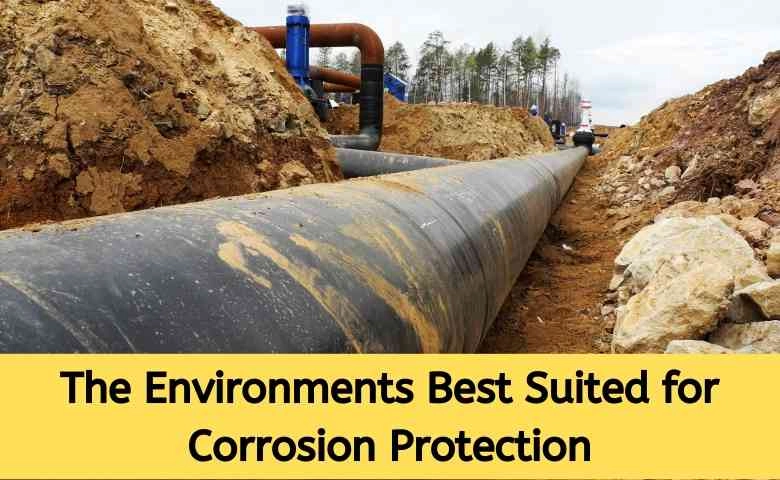Last Updated on January 9, 2022 by Admin
No matter the material, no matter its strength, rigidity, or durability, the natural corrosion process will eventually compromise the integrity of any pipeline. The corrosion of materials can manifest in many ways, most commonly in the form of pitting, the development of crevices, and filiform corrosion. Read more about the environments best suited for Corrosion Protection.
And while things like high temperatures, chemicals, and proximity of other stressors can expedite the corrosion process, there are ways to manage, slow, and at times stop metal from corroding altogether. Depending on the situation and the environment in which the material is located there are a number of techniques that can be used to preserve the integrity of steel and other building materials.
Environments Best Suited for Corrosion Protection
The following is a list of environments that are particularly well-suited for remote cathodic protection monitoring systems.
Atmospheric Corrosion: Humid Environments
When it comes to metallic corrosion, nothing expedites the process faster than moisture. Since water covers the majority of the Earth’s surface (water that is consistently drawn into the lower atmosphere forming the Earth’s cyclical weather patterns), it isn’t likely that many infrastructure projects break ground in perfectly dry and arid environments where corrosion occurs at such a slow pace that it can essentially be ignored.
Things like relative humidity, precipitation, and pollutants create very different environmental conditions, none of which are particularly forgiving towards metal. Of all the agents that make atmospheric corrosion so devastating on marine and energy industry assets, the chlorides found in marine aerosols as well as the sulfur dioxide produced as a by-product of fossil fuel consumption, are the most egregious.
Soil Corrosion: High Moisture, High-Salt, and Acidic Environments
Perhaps surprising to some, the composition of soil can corrode carbon steel as effectively as atmospheric corrosion. Of course, the rate of corrosion that occurs depends greatly on the elements found in the soil. In North America alone, there are more than 200 different types of soil, each having its own unique corrosion properties.
High levels of things like soil moisture, and electrical conductivity, not to mention salinity and acidity can certainly be attributed to the premature corrosion of carbon steel. As effective as all of these properties can be when it comes to corrosion, the density (or permeability) of the soil can also play a role in the corrosion process; the more oxygen that comes into contact with the steel structure – combined with the previously mentioned properties – the more quickly corrosion will occur.
High-Temperature Corrosion: Hot Environments
Like soil composition and atmospheric humidity, high temperatures can also expedite the corrosion process. Unfortunately, many of the industries (aerospace, energy, etc.) that require vast quantities of steel expose this vital resource to exceptionally high temperatures on a regular basis.
Just about every metal will begin to oxidize once it reaches a certain temperature. When that occurs, sulfur-bearing gases, nitrous oxides, halogens and salt deposits present in the immediate environment will ramp up the corrosion of the steel.
High-Temperature Corrosion: Marine Adjacent Environments
Since the sea is home to some of the most massive man-made structures and vessels, carbon steel is an obvious material of choice due to its high strength to weight ratio. Having said that, freshwater, saltwater, and even potable water will eventually contribute (albeit at different rates) to the corrosion of carbon steel.
Of course, salinity is an obvious culprit, but so too are things like oxygen content, pH level, temperature, and even the agitation of the body of water surrounding the structure. As one can imagine, structures like oil rigs, docks, and naval yards all have a vested interest in delaying the corrosion process through the use of cathodic protection remote monitoring technology, an alternate technology, or a combination approach.
While metal corrosion is a way of life here on Earth, there are many methods that can be used to delay or stop the progress of corrosion of vital infrastructure a cathodic protection monitoring system can be utilized even in some of the most inhospitable environments imaginable.
Mobile has a wide variety of pipeline monitoring solutions – including cathodic protection and corrosion prevention- ideal for use in most environmental situations.
Related Posts:
- How to protect your roof from water damage?
- The Complete Mechanical Engineer & Design Certification Bundle
- Books for Advanced Surveying
- 10 Renovations That Add Most Value to a Home


